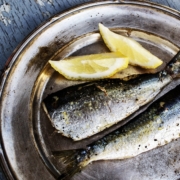Fiadone Salato Abruzzese: Traditional Easter Delights from Italy’s Culinary Heritage
Nestled within the picturesque landscapes of Abruzzo, Italy, lies a culinary treasure waiting to be discovered: Fiadone Salato Abruzzese. This savory delight, born from centuries-old traditions, captures the essence of Abruzzese cuisine with its rich flavors and rustic charm. Let’s embark on a journey to uncover the secrets behind this beloved dish and explore its tantalizing taste.
A Glimpse into History: Origins and Significance
Imagine a rustic cake, filled to overflowing with cheese and eggs, typical of Abruzzo’s Easter festivities. This flavorful version of Fiadone, which has been passed down through the years and is made up of a delicate pastry covering a rich filling, is a culinary treasure that embodies the spirit of Abruzzese cuisine.
View this post on Instagram
The dish’s noble beginnings date back to the Renaissance and may be attributed to Cristofaro da Messisbugo’s “Libro novo in which one teaches how to make all kinds of food” (1557), a landmark treatise. First made from L’Aquila saffron, the recipe developed over time and merged with regional customs to produce a unique treat that is loved all across Abruzzo.
Beautifully shaped like a cake, donut, or ravioli, the Fiadone is a mainstay of Easter cuisine that is customarily shared amongst families during Holy Week. The expertly prepared crust and the tasty filling, which includes local Rigatino, Pecorino, and Parmesan cheeses, highlight how simple and quick it is to prepare.
A combination of aged cow cheeses, on the other hand, has a softer but still delicious flavour.
Not only that, but Fiadone is so versatile that it can also be frozen, which is a handy way to keep its deliciousness intact. After baking, just put it in food bags and freeze it so you can eat it whenever you want.
Crafting Culinary Poetry: Preparation and Cooking
Creating Fiadone Salato Abruzzese is a labor of love, requiring patience, precision, and a dash of creativity. Begin by selecting the finest ingredients, sourcing locally produced ricotta cheese for an authentic taste of Abruzzo. Crack farm-fresh eggs into a mixing bowl, whisking them until light and frothy. Grate aged Parmesan cheese, allowing its nutty richness to infuse every bite.
View this post on Instagram
Next, combine the ricotta, eggs, Parmesan cheese, and a hint of freshly grated nutmeg in a bowl, stirring until smooth and velvety. Pour the mixture into a greased baking dish, spreading it evenly to ensure uniform cooking. Then, slide the dish into a preheated oven, allowing the Fiadone Salato to bake until golden brown and fragrant, filling the kitchen with irresistible aromas.
Serving Suggestions and Pairings
Fiadone Salato Abruzzese is a flexible meal with several serving possibilities, each highlighting its unique flavors and textures. Serve it warm as an appetizer with crusty bread or toasted crostini, so guests can spread the creamy richness with each bite. Alternatively, cool the Fiadone Salato before slicing it into beautiful wedges to serve over a charcuterie board or antipasto plate.
View this post on Instagram
For a more substantial a bite to serve Fiadone Salato Abruzzese with a crisp salad prepared in a light vinaigrette to achieve a perfect mix of tastes and textures. The creamy richness of the Fiadone compliments the salad’s crisp freshness, creating a symphony of sensations with each forkful.
Sharing the Flavors of Abruzzo:
In the heart of Abruzzo, food is more than just a means of subsistence. Every decadent morsel of Fiadone Salato Abruzzese transports the palate into this magnificent historical tapestry. A delectable example of the timeless appeal of Abruzzese cuisine, Fiadone Salato is best enjoyed in moments of calm contemplation or when sharing a quip with loved ones.

 True Italian
True Italian







 True Italian
True Italian True Italian
True Italian
Leave a Reply
Want to join the discussion?Feel free to contribute!